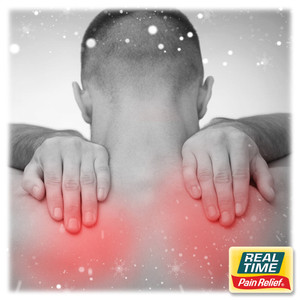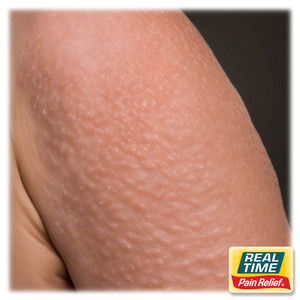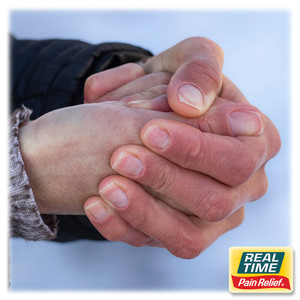Is Your Posture Causing Runner’s Knee?
5th Oct 2022
If you are a runner, you may be familiar with a common condition called runner’s knee. It is a term used to describe a few different conditions that involve pain around the kneecap. The technical term for runner’s knee is patellofemoral pain syndrome.
In addition to running, it can develop as a result of other activities, such as biking, skiing, and jumping. But it is most common in runners.
Symptoms of runner’s knee include
- Dull aching pain around the kneecap
- Pain may be worse after sitting or when running
- Popping of the knee
- Swelling around the kneecap
- Several things may contribute to the development of runner’s knee, including your posture.
Posture and Runner’s Knee
You probably know that poor posture can lead to shoulder, neck, and back pain. But how does it affect running and knee problems? The bones and muscles of your body are all interconnected. If your posture is weak, it can place added stress on certain parts of the body. Continued posture problems may also result in a weak muscle group, which may contribute to issues in other parts of the body.
For example, your hip muscles control the position of your knee to some extent when you are running. Poor posture may change the alignment of the hips and pelvis, which creates increased stress on the knees and may eventually lead to runner’s knee.
According to the American Posture Institute, when the position of the pelvis is misaligned due to poor posture, other muscles compensate, such as the hamstrings. But some muscles, such as the quadriceps and hips, may not be adequately engaged. The quadriceps and hips help stabilize the knee. If they are not utilized and involved in stabilization as they should be, it can impact the force to the knee, creating more stress.
Posture while running also refers to the position of the trunk, shoulders, and arms. One important factor that may affect the development of runner’s knee is trunk flexion.
One study published in the Journal of Orthopaedic & Sports Physical Therapy looked at the relationship between posture and an increase in knee pain. The study involved 24 recreational runners that were asymptomatic. The participants ran at the same speed using three trunk posture positions, including self-selected, flexed, and extended.
The study indicated that trunk posture played a role in landing force and stress put on the hips and knees when running. An extended or upright truck placed more pressure on the knee than a slightly forward posture. A forward lean decreased demand on the knee, which may reduce the risk of runner’s knee. The small lean forward also promotes a more efficient foot strike.
Improving Posture when Running
There may not be one perfect running form for every individual, but maintaining good running posture may help prevent injuries, including runner’s knee. It might be hard to concentrate on all aspects of your posture. Instead, try to focus on improving one thing at a time. Below are a few things to keep in mind to improve running posture.
#1) Consider a slight forward trunk lean. Even a small adjustment in how much you lean can make a difference. Researchers found that an eight-degree increase in forward lean decreased force to the knee joint.
#2) Avoid hunching over. A slight forward trunk lean does not mean you hunch your back. Keep your back straight.
#3) Use short, quick strides, which place less pressure on the knee.
#4) Keep your elbows close to your sides.
#5) Maintain a neutral pelvis to prevent added stress to the hips.
#6) Do not tense your shoulders. Keep them relaxed.
5 Tips for Decreasing Runner’s Knee
Improving your posture while running may help decrease your risk of developing runner’s knee. But knee pain can still occur. Treating runner’s knee at the first sign of a problem can help decrease discomfort and prevent the condition from becoming worse. Consider the following tips:
#1) Change Your Running Surface
Run on a soft surface, such as a treadmill or trail instead of the sidewalk or road.
#2) Use a Topical Pain Relief Lotion
A topical lotion that contains natural ingredients is a great way to reduce knee pain and inflammation without taking oral medication. Topical pain lotions block nerve endings close to the skin, which decreases discomfort.
#3) Increase Slowly
Gradually increase distance and speed no more than 10 percent at a time. Slowly increasing your miles or speed gives your body time to adjust.
#4) Take a Joint Supplement
Taking a joint supplement is an excellent way to keep your knees in top shape. Joint supplements can reduce inflammation and keep joints healthy, which may prevent knee problems from developing.
#5) Use Ice
At the first sign of knee pain, apply an ice pack to the sore knee. Apply the ice for about 15 to 20 minutes several times a day.
For over 20 years, families across the U.S. have turned to Real Time’s lotions and creams for PAIN RELIEF YOU CAN TRUST®. From Lifestyle Essentials, through our Nujuvena line, to Pain Relief Formulas, Real Time has you covered.
Sources:
- https://www.hopkinsmedicine.org/health/conditions-and-diseases/patellofemoral-pain-syndrome-runners-knee
- https://www.ncbi.nlm.nih.gov/pubmed/28543791
- https://trailrunnermag.com/training/trail-tips/fix-your-posture-fix-your-running.html
- https://www.jospt.org/doi/full/10.2519/jospt.2014.5249
- https://americanpostureinstitute.com/run-with-incorrect-posture-and-you-will-run-no-more/





